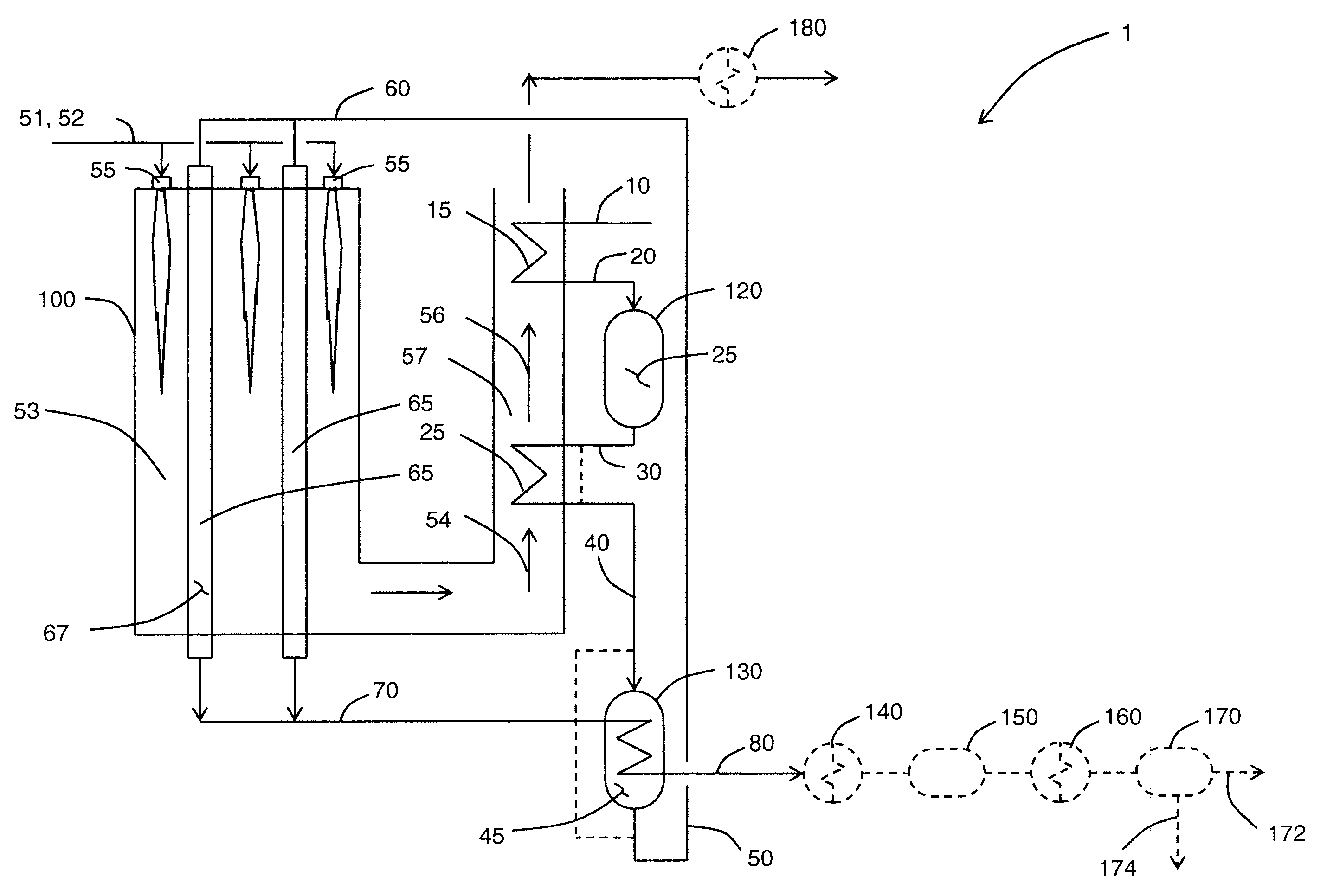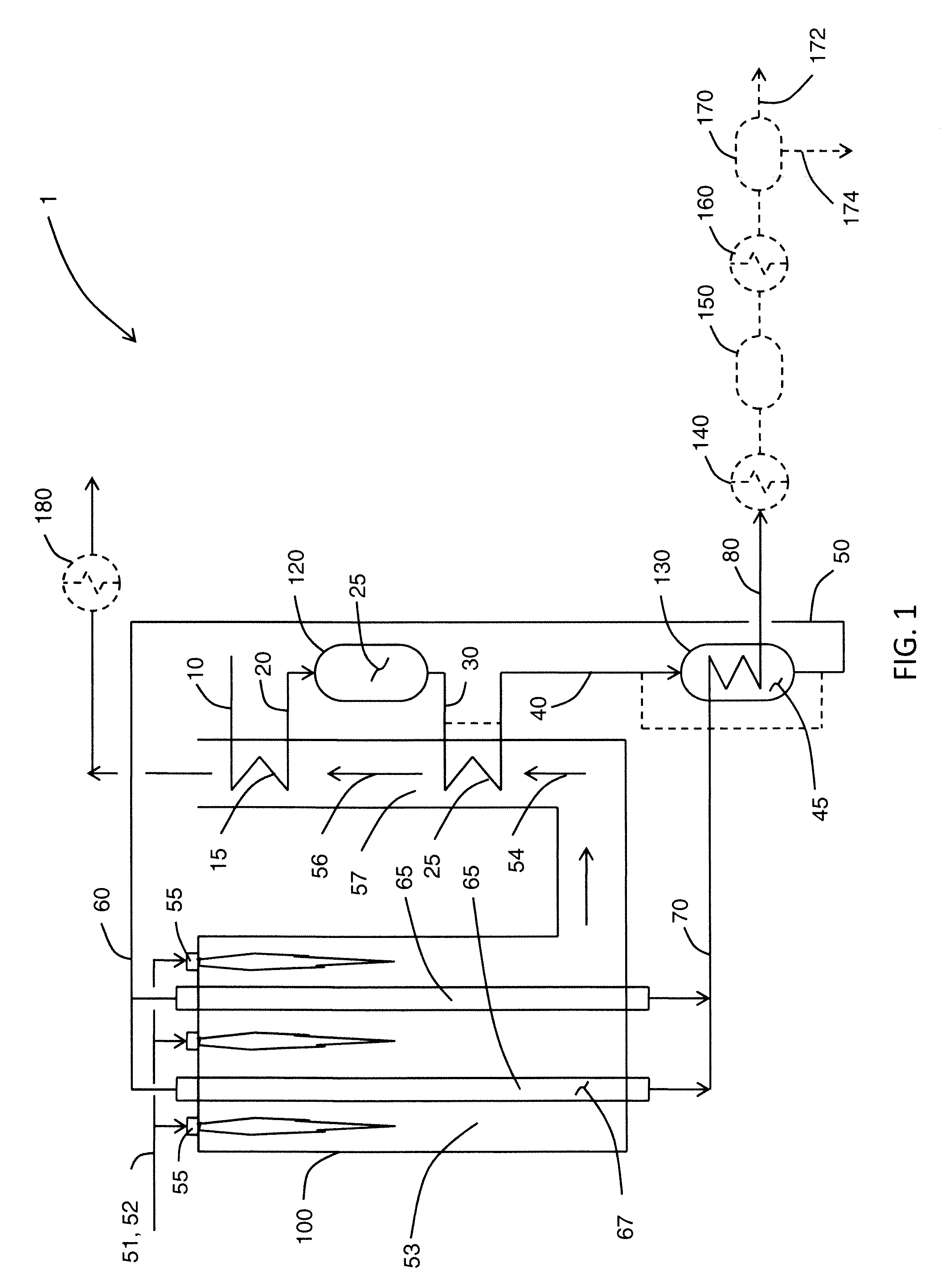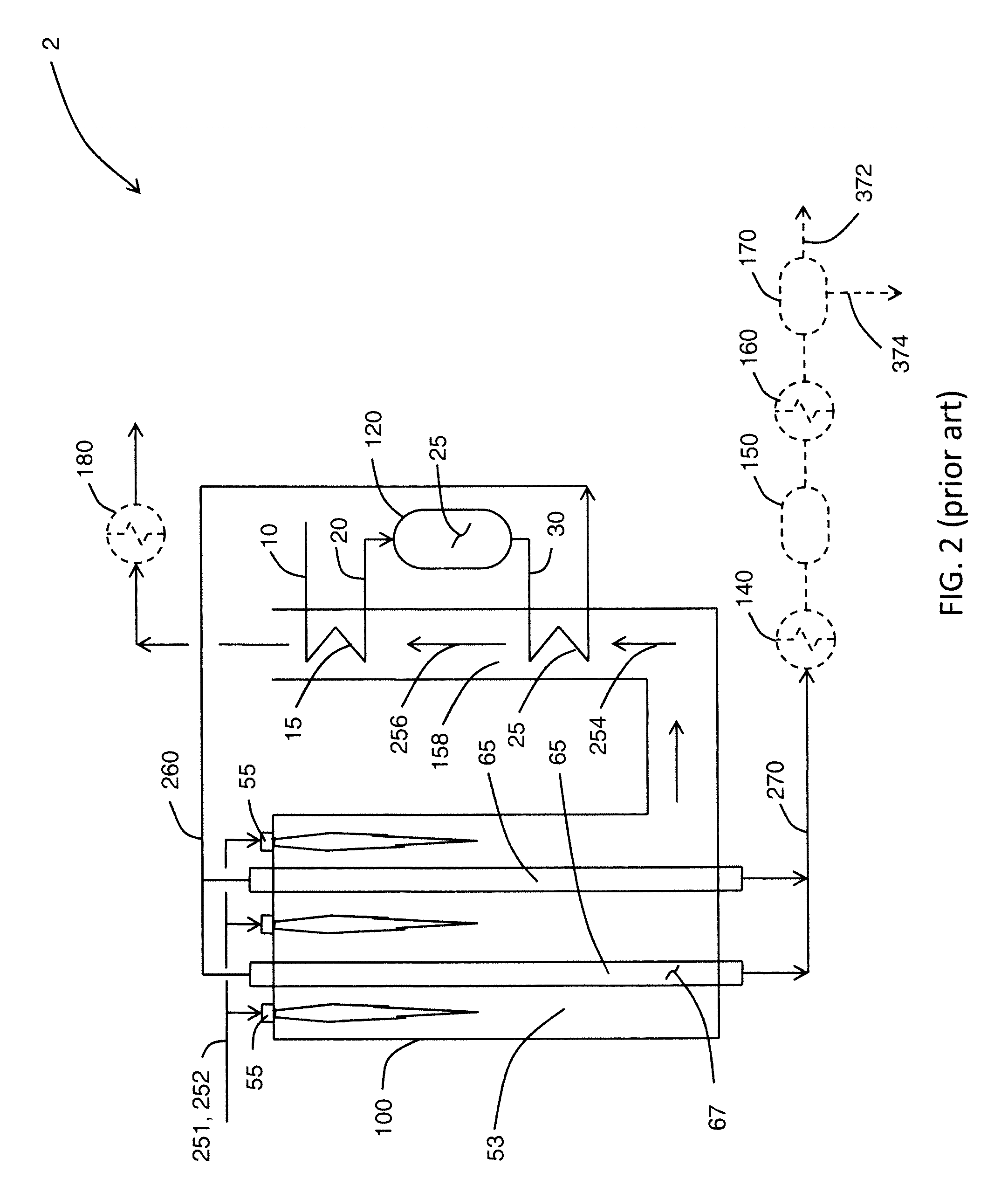Steam-Hydrocarbon Reforming with Limited Steam Export
a technology of steam hydrocarbon and export, which is applied in the direction of liquid-gas reaction process, chemical apparatus and processes, organic chemistry, etc., can solve the problems of high cost, high pipeline system cost, additional capital expenditure, etc., and achieve the effect of limited or reducing steam expor
- Summary
- Abstract
- Description
- Claims
- Application Information
AI Technical Summary
Benefits of technology
Problems solved by technology
Method used
Image
Examples
example 1
Comparative Example
[0091]FIG. 2 illustrates a process flow diagram 2 for a prior art configuration.
[0092]Prereformer feed gas 10 consisting of steam and natural gas with a steam-to-carbon molar ratio of 2.5 is heated in heat exchanger 15 and the heated prereformer feed gas 20 is reacted in prereformer 120 over prereformer catalyst 25. Reformate 30 is withdrawn from the prereformer 120 and heated in heat exchanger 25 to form a heated reformate which is passed to the plurality of reformer tubes 65 as reformer feed gas 260. Reformer feed gas 260 is reacted over reforming catalyst 67 and withdrawn from the plurality of reformer tubes 65 as reformed gas 270. Reformed gas 270 is passed to boiler 140 to generate steam thereby cooling reformed gas 270. The cooled reformed gas 270 is passed to shift reactor 150 to convert CO to CO2 and form additional H2 in the reformed gas. The shifted reformed gas is passed to air cooler 160 to condense out water and prepare the reformed gas pressure swing...
example 2
Comparative Example with Reduced Steam Export
[0100]The process flow diagram in FIG. 2 also applies for Example 2. The amount of steam formed is decreased by increasing the air preheat temperature. The air preheat temperature is increased by preheating the air in two stages. Example 1 has a single stage of aft preheat, whereas example 2 has two stages of air preheat. Otherwise example 2 is the same as example 1. The process was optimized for an air preheat temperature provided by the two-stage air preheat to achieve the lowest Net Specific Energy while keeping the mole fraction ratio, R, the same as in example 1.
[0101]The steam-to-carbon molar ratio, S / C, for example 2 was essentially the same as for example 1.
[0102]The amount of excess steam produced in example 2 was significantly less than for example 1 as demonstrated by the ratio of steam used for reforming to the total steam produced in the process, S / ST. S / ST for example 2 is 0.64 compared to 0.45 for example 1.
[0103]While the ...
example 3
Gas Heat Exchange Reformer and Reduced Steam Export
[0104]FIG. 1 illustrates a process flow diagram 1 for example 3. Like example 2, example 3 also uses two stages of air preheat.
[0105]Example 3 includes the gas heat exchange reformer 130 and the process was optimized to provide the lowest net specific energy, NSE, for a specified reformate inlet temperature of 649° C. and a specified reformed gas outlet temperature of 788° C. while keeping the mole fraction ratio, R, less than those in examples 1 and 2. The mole fraction ratio, R, for example 3 was not maintained at the same value as for examples 1 and 2 because the supplemental fuel value goes to zero in the optimization, which is a situation those skilled in the art know to avoid. The mole fraction ratio, R, is affected by the steam-to-carbon molar ratio, which can be reduced to 2.3 while providing a mole fraction ratio, R, of about 1.12. The temperatures in and out of the gas heat exchange reformer 130 are limited according to th...
PUM
 Login to View More
Login to View More Abstract
Description
Claims
Application Information
 Login to View More
Login to View More - R&D
- Intellectual Property
- Life Sciences
- Materials
- Tech Scout
- Unparalleled Data Quality
- Higher Quality Content
- 60% Fewer Hallucinations
Browse by: Latest US Patents, China's latest patents, Technical Efficacy Thesaurus, Application Domain, Technology Topic, Popular Technical Reports.
© 2025 PatSnap. All rights reserved.Legal|Privacy policy|Modern Slavery Act Transparency Statement|Sitemap|About US| Contact US: help@patsnap.com



